Maori Octopus
Marcoctopus Maorum
The majestic Maori octopus is one of the largest species in the southern hemisphere. It is an extremely fierce predator due to its sheer size, extensive diet, and dominance over co-existing octopus species.
Size
Mantle length up to 300 mm (11.8 in) and a total length of around 1 m (3.2 ft)
Lifespan
Unknown
Habitat
Depths ranging from 0 to 549 m (0 -1801 ft)
Diet
Large crabs, rock lobster, abalone, mussels, scallops, fish and octopus
Range
Australia & New Zealand
Predators
Australian Fur Seals, Dolphins, Pilot Whales, Gummy Sharks and Albatross
superpower
Parachute Hunting
Using jet propulsion, the Maori Octopus will pounce on top of the substrate, engulfing crevices and plant matter within their extensive arm webs.
SCIENTIFIC NAME: Marcoctopus Maorum
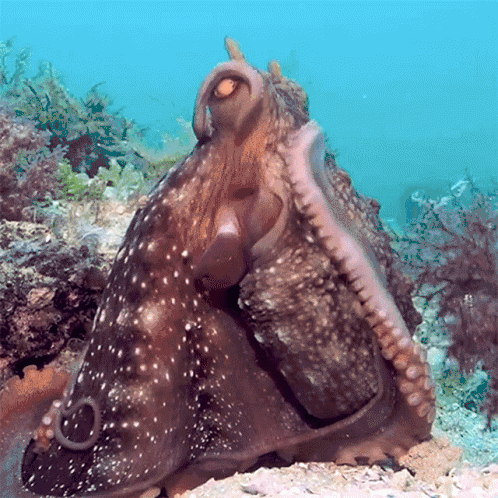
SIZE OF MAORI OCTOPUS
This large and muscular octopus has a mantle length up to 300 mm (11.8 in) and a total length of around 1 m (3.2 ft). Their body weight can be up to 10 kg (22 lbs). They possess powerful long arms which are 5.5x the mantle length. Their dorsal arms are the longest and thickest out of their 8 arms. “Muscularity” in octopuses refers to their broad, robust anatomy. They generally possess bulky arms and mantles in contrast to more slender and thin armed burrowing species.
LIFE SPAN
The lifespan of this species is unknown.
DISTRIBUTION
The Maori octopus is native to Australia & New Zealand. They live in the temperate waters of Southern Australia ranging from eastern Victoria to Perth in Western Australia. They are found throughout New Zealand’s temperate-subarctic oceans.
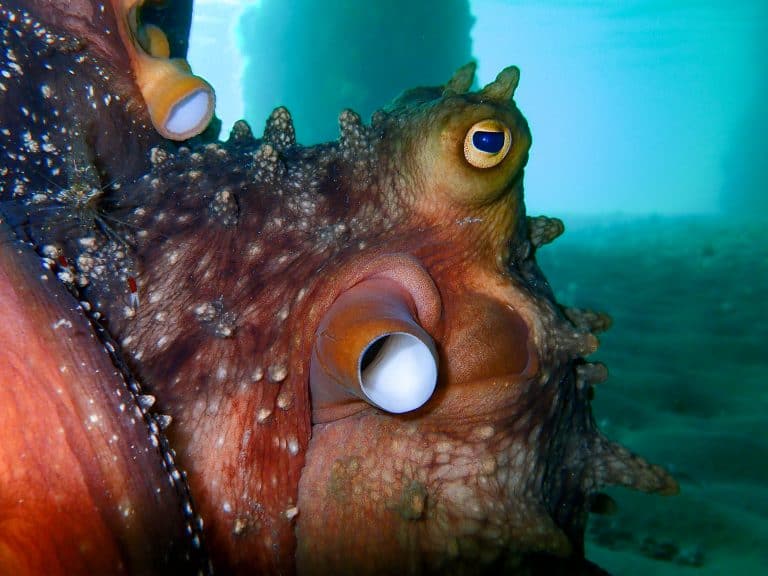
HABITAT
This octopus lives on rocky reefs, seagrass beds, and in kelp forests at depths ranging from 0 to 549 m (0 -1801 ft). Their lairs are large and are often excavated under large boulders with fresh abalone and mussel shells scattered around the entrance.
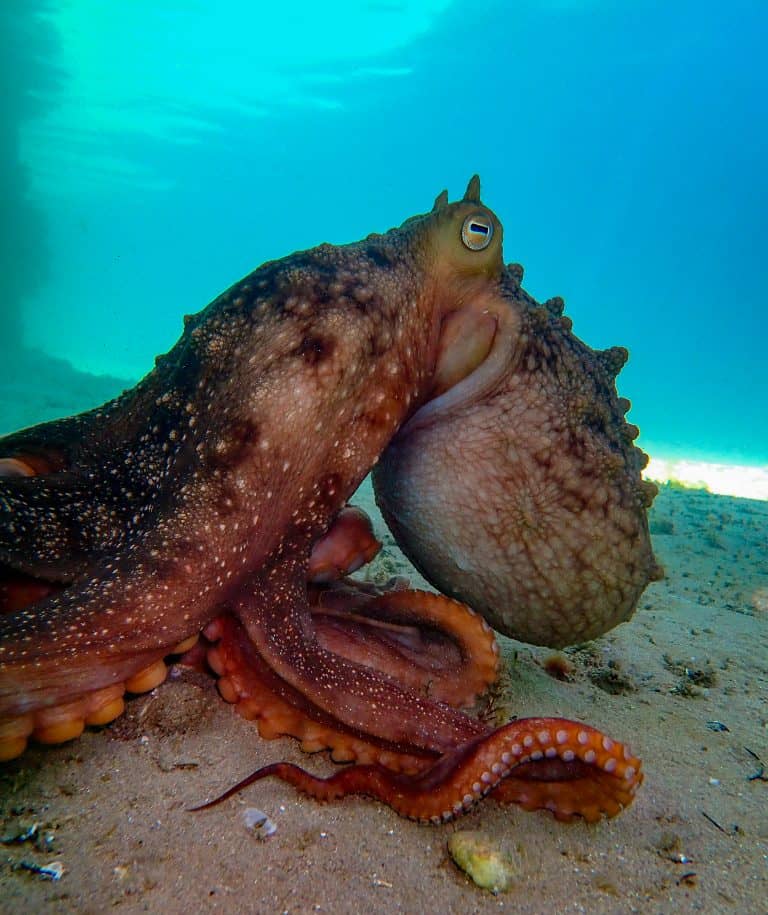
DIET
This octopus is considered a selective forager. It feeds on a wide range of prey including large crabs, rock lobster, abalone, mussels, scallops, fish and even other octopus! The large webs between each arm can be flared up to trap prey. When Maori Octopus bite their prey, they administer strong paralyzing neurotoxins that immobilize prey and slowly liquefies flesh. This allows for safe and easy digestion as all octopus must thoroughly break down food. This is due to the placement of their esophagus which goes straight through their donut shaped circular brain.
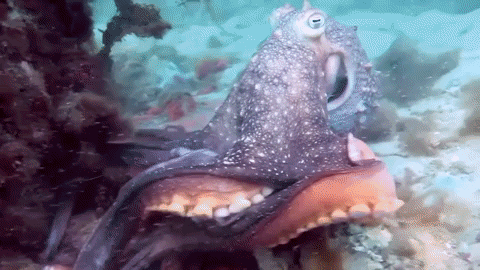
BODY PATTERNS AND BEHAVIORS
The color pattern of this species ranges from orange-brown to dark purple-grey with numerous small iridescent white spots scattered over the arms, webbing, and dorsal arm crown. The underside of their arms is a rusty orange color with white-orange suckers. Skin texture of small irregular patches and papillae over dorsal surfaces. Large spike-like papillae on the mantle and upper arm crown. Large and wide arm webs.
The Maori Octopus spawns in the spring and summer months where females lay around 7000 individual eggs within the safety of their dens. Mothers are very protective of their eggs and will tend to them until they hatch. Eggs take around 2 months to hatch during which the mother does not eat making sure they are never left unattended. Hatchlings have a total length of 5.06 mm (0.2 in) and possess 6-11 chromatophores. Hatchlings are planktonic and undergo a paralarval stage where they develop and travel mid-water in oceanic currents before settling on the seafloor as a subadult.
It’s difficult to determine the exact lifespan of this species, however most warm water species are fast growing, breed once and live for 12-18 months.
The Maori Octopus is considered an aggressive species as it is known to cannibalize smaller individuals, as well as eggs. They even attack and eat cohabitating octopus species, regardless of size. A smaller Maori Octopus was observed hunting a much larger Common Sydney Octopus! Generally, small individuals are active at night while large adults are observed foraging during the day.
This Octopus falls prey to Australian Fur Seals, Dolphins, Pilot Whales, Gummy Sharks and Albatross.
Maori Octopus Hunting/Foraging Techniques
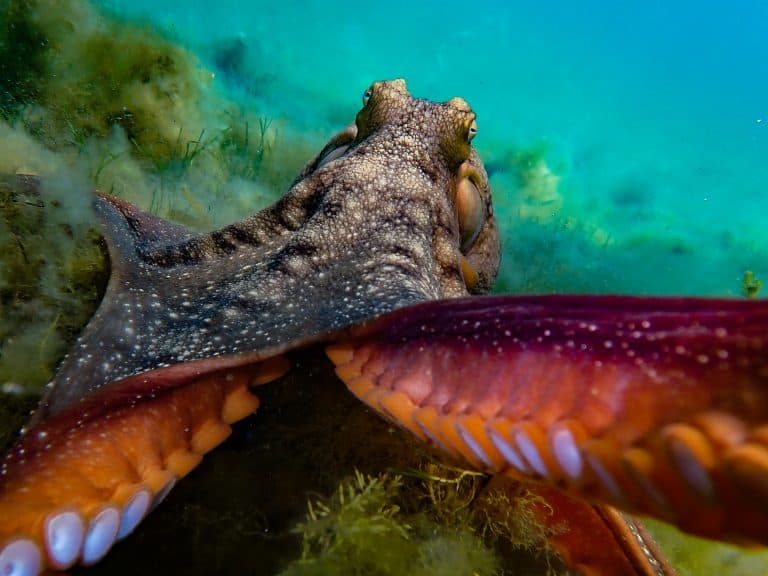
Parachute Hunting
This octopus’ primary hunting technique is called the parachute position. Using jet propulsion, the Maori Octopus will pounce on top of the substrate, engulfing crevices and plant matter within their extensive arm webs. They then proceed to flush prey into the grip of their powerful suckers. There is simply no escape for any prey items hiding underneath! This is a very effective hunting technique for the Maori Octopus as they can encompass considerable amounts of substrate within a relatively fast time frame.
The Maori Octopus can also use its arms to persistently dig to uncover hidden prey such as burrowing bivalves. It pushes material such as sand, rocks and pebbles onto its arm webs and dumps the removed material. They can also use this technique to hide from predators by excavating dens!
Anderson, T. J. (199). Morphology and biology of Octopus maorum Hutton 1880 in northern New Zealand. Bulletin of Marine Science. 65 (3). pp. 657-676.
Grubert, M. A.; Wadley, V. A. (2000). Sexual Maturity and Fecundity of Octopus Maorum in Southeast Tasmania. Bulletin of Marine Science. 66 (1). pp. 131–142.
Jereb P, Roper CFE, Norman MD, Finn JK (eds) (2014) Cephalopods of the world. An annotated and illustrated catalogue of cephalopod species known to date. Volume 3. Octopods and Vampire Squids. FAO Species Catalogue for Fishery Purposes. No. 4, Vol. 3. Rome, FAO. pp.199-200.
Pack, Y. (1982). Masking behaviour and related biology of Notomithrax ursus (Oxyrhyncha: Majidae) (Doctoral Thesis, University of Canterbury, Christchurch, New Zealand)
Robson, G.C. (1928). On the giant octopus of New Zealand. Proceedings of the Zoological Society of London. 98(1). pp. 257-264.